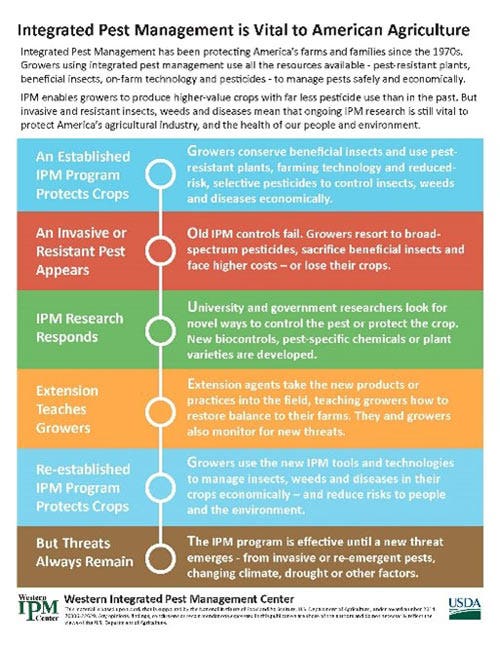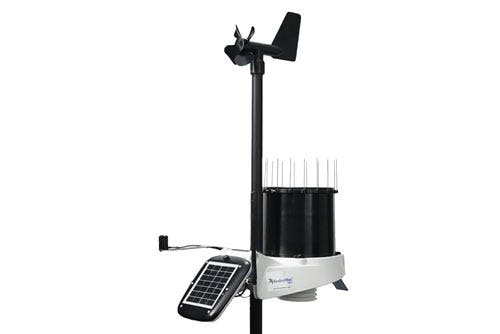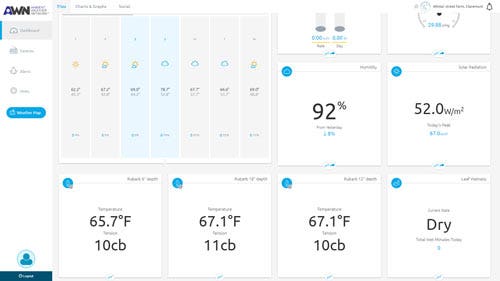Agriculture Weather Stations Help Growers Make Effective Pest Management Decisions

Growers have their fair share of obstacles in managing crop health, pests, and irrigation decisions. While a fertilizer shortage is at the top-of-mind for many farmers, another looming issue is the upcoming pest problem that the warmer seasons bring.
That’s why having reliable, accurate data about your local weather conditions is so important when it comes to planning out your farming operations each season. Installing a weather station is an easy way to give yourself valuable insights into what is happening in your field so you can make informed decisions about plant health and integrated pest management (IPM) practices.

NEWA Improves Pest Management processes & More for Farmers
The Network for Environment and Weather Applications (NEWA) offers a collection of agricultural decision support tools. It works by using real-time weather data for a variety of states, including NEWA partner states such as New York, Pennsylvania, Nebraska, Iowa, Illinois, and Maryland, and more.
As part of the New York Integrated pest management Program at Cornell University, these tools are designed by agriculture researchers and specialists.
The point of NEWA is to provide growers with accurate weather data and support tools, for informed agricultural management decisions.
Pest forecasts are available for a number of different crops that you’ll find around the country, including grapes, onions, apples, potatoes, tomatoes, and sweet corn.
In addition to pest management, NEWA also assists with other climate-related data so farmers can make smart decisions for their crops. This means preparing for potential droughts, damaging storms, and more.
There is a total of 30 IPM and crop products tools along with 13-degree day tools available for free from NEWA.

The Power of IPM for Pest Management
Integrated Pest Management (IPM) allows farmers to solve pest problems while minimizing the risk of using pesticides. This long-term prevention strategy aims to only remove the problem pest, unlike blanket pesticides that kill off honeybees. IPM’s approach also aims to reduce the risk of using pesticides to protect human health.
Pest management starts at the eco-system, where you must consider elements such as land, air, water, crop, and maintaining productivity for farmers.
IPM is an information-intensive approach to pest management. This approach monitors the pest, along with the other organisms around that are supporting the pest. The eco-system of the farm is evaluated to eliminate the pest.
One important component of this eco-system is weather patterns. Changing weather patterns affect weed growth as well as insect infestations. This is often the result of longer growing seasons along with warming temperatures.
KestrelMet 6000 AG NEWA-Compatible Weather Station
The good news is that farmers can have their own NEWA-compatible weather station onsite. With the help of the Kestrel 6000 AG weather station, farmers can easily monitor weather while getting a handle on pest control.
The KestrelMet 6000 AG NEWA-Compatible Weather Station is an incredibly powerful all-in-one weather tracking device. With incredible accuracy, the KestrelMet 6000 provides the following measurements for on-farm conditions monitoring:
- Temperature
- Relative Humidity
- Wind Speed
- Wind Direction
- Dewpoint
- Barometric Pressure
- Rainfall
- Leaf Wetness
- Solar Irradiance
- Soil Temperature and Moisture Sensors (optional)
Simple to use and set up, farmers can also view and manage their Kestrel weather data on both laptop and mobile devices with the Ambient Weather Network online portal or app.

Image caption: View field weather condition on your laptop or on your phone with Ambient Weather Network.
To learn more about the KestrelMet 6000 AG NEWA-Compatible Weather Station, click here.





